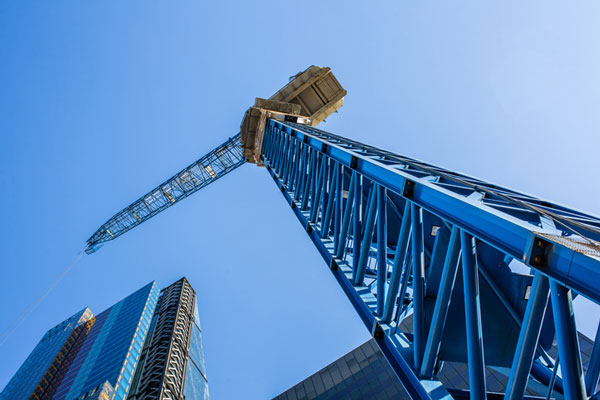After three years of flying high, residential construction in New York City took a hit in 2017.
The residential sector citywide saw about $11 billion in development spending for the year, down a hefty 31 percent from a peak of $16 billion in 2016. And that figure is expected to drop to $10.6 billion by 2019, according to a recent report released by the New York Building Congress.
In terms of actual residential units built, the organization predicted a drop-off of about 41 percent between 2016’s 37,700 units and the 22,000 expected in 2019.
But there is some good news. While overall construction was also down, all of these numbers are still high compared to the average during the past decade.
In addition, not all boroughs are seeing the same decline.
Manhattan, which drove the 2014 and 2015 residential construction boom, saw the biggest reduction in 2017, according to an analysis of Department of Buildings permits by The Real Deal.
The number of permits for new multifamily buildings in Manhattan dropped 12 percent, to 66 buildings, while the square footage fell by a third for the year, to 4.8 million.
But Brooklyn and the Bronx both saw the number of applications for new building permits and square footage jump.
Brooklyn developers filed 394 building applications encompassing 7.5 million square feet with the DOB, up 5 percent from the previous year, while the Bronx logged 99 applications totaling 5.2 million square feet, up 15 percent from the previous year. Applications in Queens slid 26 percent for new buildings and 14 percent for total square footage.
Robin Schneiderman, Halstead Property Development Marketing’s managing director of new business development, attributed the residential construction slowdown to inflated land values. But, he said, those prices have started correcting, which has spurred activity.
“The pricing of land in certain areas is certainly getting to a level that developers are getting more active again,” he said.
Dick Markel, executive project manager at the Long Island City-based construction and design firm UA Builders, said much of the “low-hanging fruit” —meaning affordable development sites — in the outer boroughs has been picked.
But Markel, whose firm has been focusing on projects in the Bronx, noted, “if you’re strategic about it, there’s still a booming market.”
The Gilbane Building Company, a Rhode Island-based national construction company, is also building in the Bronx. The firm has teamed up with Hudson Companies to convert the Spofford Juvenile Detention Center into a $300 million affordable housing complex with 740 affordable units and 200,000 square feet of industrial, retail and community space.
Company Vice Chairman Bill Gilbane said the firm — which is also the construction manager at Manhattan’s four-mile Hudson River Park along the West Side Highway — always maintains a “balance of institutional and public work.”
He said it is also focused on healthcare, a sector he expects to see significant construction activity over the next 18 months.
But others are continuing to stick with residential construction.
Justin Palmer of Synapse Development Group, which built Manhattan’s first environmentally passive rental building in Harlem, said he expects multifamily construction to continue. With the right land deal, “the fundamentals are good to build rental,” he said.
And there are opportunities, particularly when investors are looking to exit a project or partners need to recapitalize. “I’m beginning to see that kind of deal flow,” Palmer said.
Another area within residential construction that’s attracting attention from developers is senior housing, particularly luxury senior housing. With Baby Boomers aging into retirement, demand is only expected to increase.
In November 2017, private-equity firm Kayne Anderson Real Estate Advisors announced plans to convert 21 Clark Street in Brooklyn Heights into luxury rentals for seniors. The firm bought the property from the Jehovah’s Witnesses for $200 million and is expected to spend $100 million on renovations. Meanwhile, in July, Omega Healthcare broke ground on a 24-story senior housing development at 1802 Second Avenue in Manhattan. Rents at the Handel Architects-designed project will reportedly start at $12,000 a month.
Halstead’s Schneiderman argued that the residential construction market needed a cooling off period.
“It gave the market a chance to take a deep breath and catch up from an absorption standpoint,” he said.
